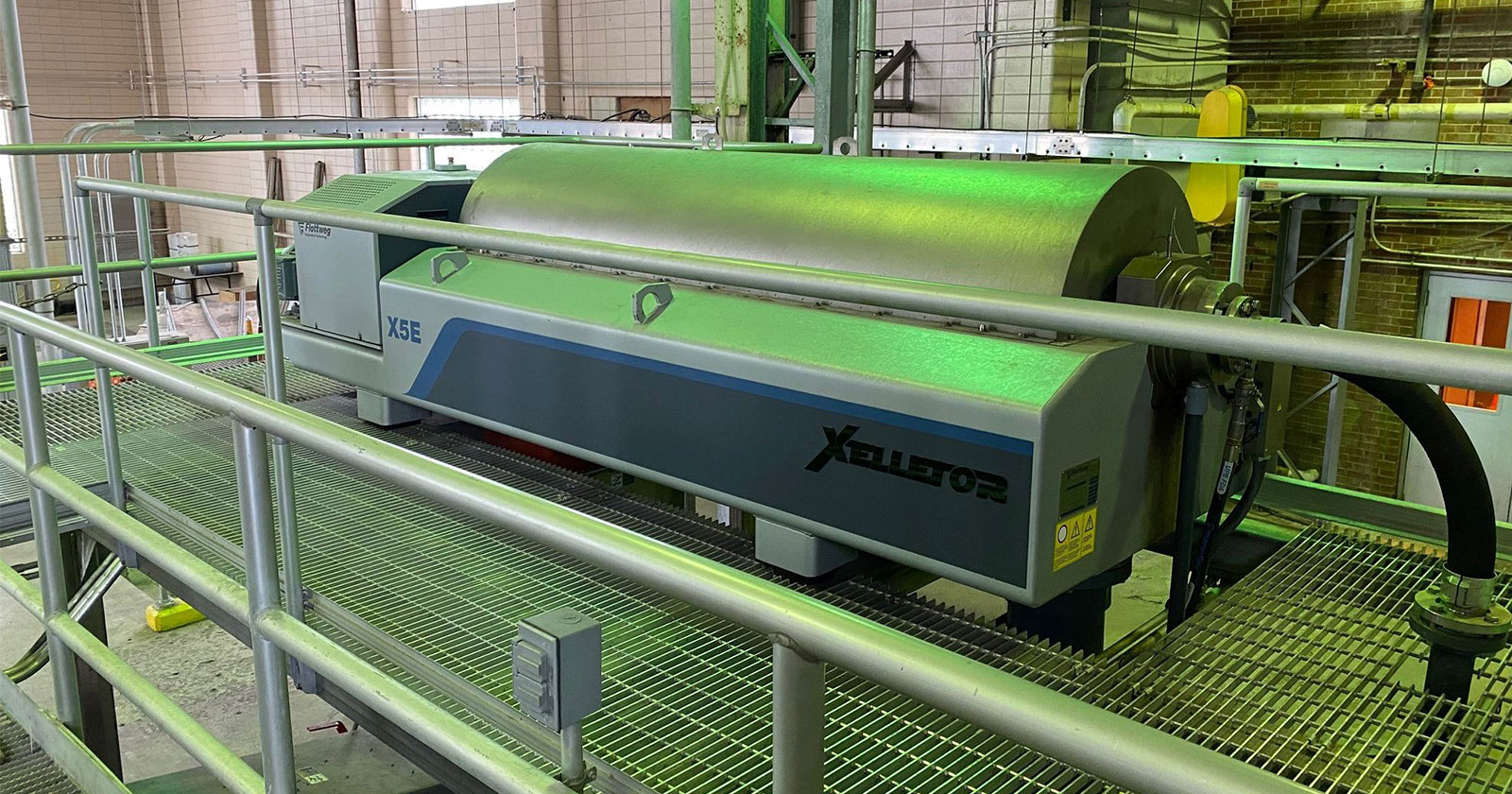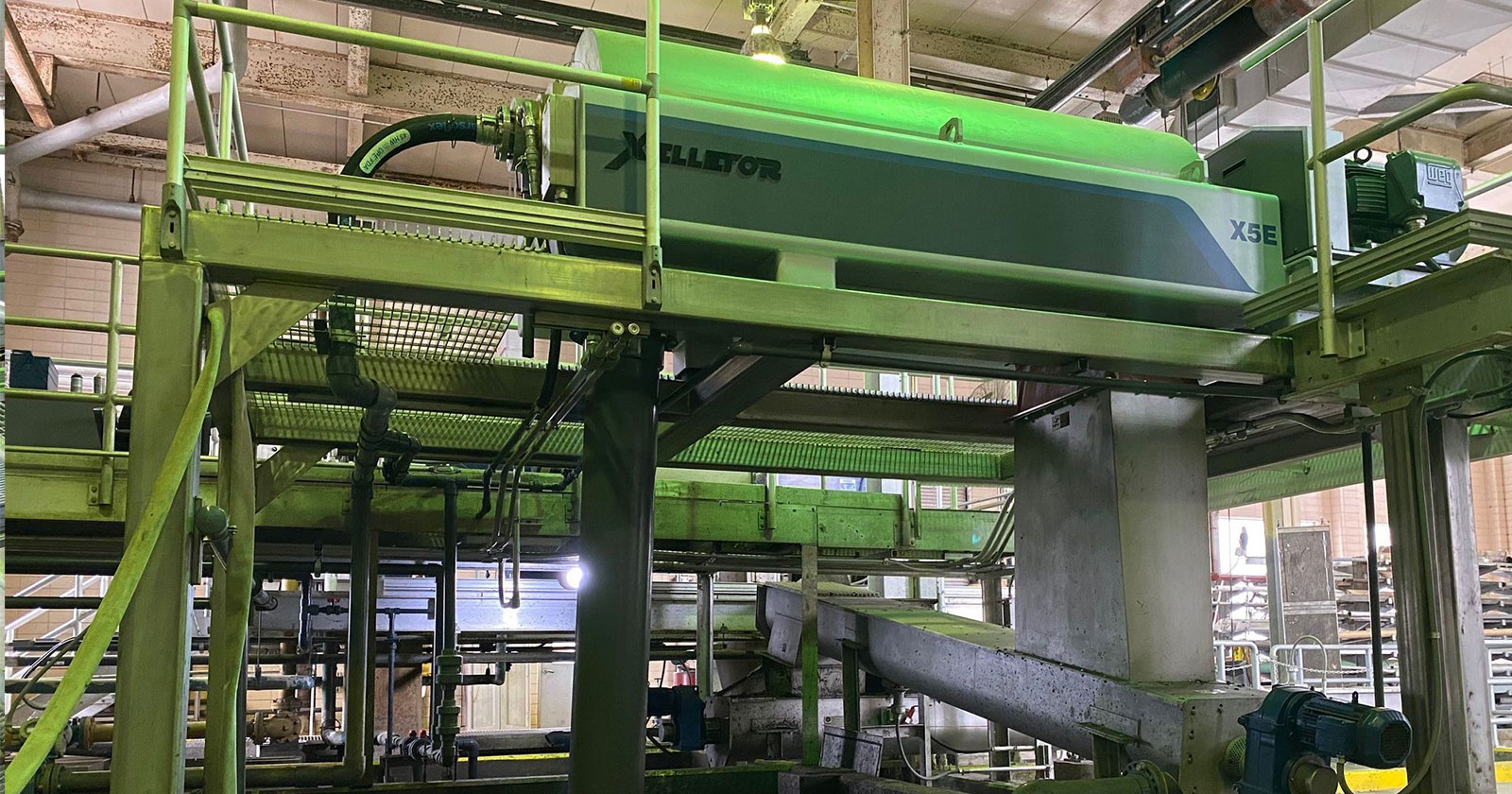2024-07-29
Ohio Water Reclamation Facility Improves Efficiency and Saves Operating Costs
Experiencing a consistently solid cake is just one of the benefits of switching separation technologies for a wastewater treatment facility that serves nearly 50,000 people in Northwest Ohio. The added bonus is a significant cost savings when fewer chemicals are required during the process that included an upgrade from a belt press to a centrifuge decanter.
In just the first two years of operation, the City of Middletown, Ohio Water Reclamation Facility installed a highly efficient decanter that reduced production time by two days a week, increased efficiency, and saves thousands of gallons of chemicals per year—translating to substantial cost savings.
Background
The Wastewater Treatment Division of the City of Middletown, Ohio operates and maintains the city's 26 million gallons per day (MGD) treatment plant. The division protects the health of the community and environment by reclaiming an average of 14.5 million gallons of wastewater each day from all residential, commercial, and industrial sources.
From this process, two recycled products are provided—clean water discharged into the Great Miami River and approximately 1,500 dry tons/year of processed biosolids, which are applied to farmland for its nutrient and soil conditioning value.The design flow for the Water Reclamation Facility is 26 MGD. The combined system means the flows could peak at 50 million gpd.
 The City of Middletown has been using the Flottweg Xelletor centrifuge since 2018 and has experienced significant cost savings.
The City of Middletown has been using the Flottweg Xelletor centrifuge since 2018 and has experienced significant cost savings.
The Challenge & Solution
The Water Reclamation Facility previously used a belt press and a centrifuge that wasn’t performing well. In 2018, they removed the belt press because it was difficult for technicians to operate and was only producing 15 to 18% solids. Just two years later, the centrifuge was producing approximately 30% solids, and the efficiency continues.
“We wanted more consistency in our cake solids, resulting in less cost to haul,” said Manager Gerry Burris. “We wanted something to be comparable with the machine we already had, but something with less mechanical issues, and better service from the manufacturer.”
In 2018, the facility installed a Flottweg Xelletor centrifuge and was able to reduce production time from five days a week to three days a week (8 to 10 hours per day). The older centrifuge was kept as a backup, and the belt press was eliminated.
“With the reduced schedule, we could still move product without the operating cost and the chemical costs of running five days a week,” Burris explained. We now operate with better consumption and efficiency than running five days a week, as in the past.”
Burris said they saved a considerable sum of money by installing the machine themselves, which went smoothly. “We had a few startup problems as the operators were trying to mimic the other machine,” he said. “They were accustomed to the controls of the other machine, but Flottweg did a great job of integrating the screens and making them similar to what the operators were familiar with. This made it an easy transition.”
In addition, the more efficient decanter offered the facility an opportunity to make multiple adjustments in the overall operation and its usage of chemicals. “It was like night and day,” Burris said. “After the installation of the Flottweg decanter, it produced significant savings on chemical usage. We don’t use nearly as much polymer or ferric chloride.”
 The fully automatic adjustment of the bowl speed and differential speeds produces optimum dry matter levels in the dewatered solids at any time, even in case of varying conditions in the feed.
The fully automatic adjustment of the bowl speed and differential speeds produces optimum dry matter levels in the dewatered solids at any time, even in case of varying conditions in the feed.
The Water Reclamation Facility previously used a belt press and a centrifuge that wasn’t performing well. In 2018, they removed the belt press because it was difficult for technicians to operate and was only producing 15 to 18% solids. Just two years later, the centrifuge was producing approximately 30% solids, and the efficiency continues.
“We wanted more consistency in our cake solids, resulting in less cost to haul,” said Manager Gerry Burris. “We wanted something to be comparable with the machine we already had, but something with less mechanical issues, and better service from the manufacturer.”
In 2018, the facility installed a Flottweg Xelletor centrifuge and was able to reduce production time from five days a week to three days a week (8 to 10 hours per day). The older centrifuge was kept as a backup, and the belt press was eliminated.
“With the reduced schedule, we could still move product without the operating cost and the chemical costs of running five days a week,” Burris explained. We now operate with better consumption and efficiency than running five days a week, as in the past.”
Burris said they saved a considerable sum of money by installing the machine themselves, which went smoothly. “We had a few startup problems as the operators were trying to mimic the other machine,” he said. “They were accustomed to the controls of the other machine, but Flottweg did a great job of integrating the screens and making them similar to what the operators were familiar with. This made it an easy transition.”
In addition, the more efficient decanter offered the facility an opportunity to make multiple adjustments in the overall operation and its usage of chemicals. “It was like night and day,” Burris said. “After the installation of the Flottweg decanter, it produced significant savings on chemical usage. We don’t use nearly as much polymer or ferric chloride.”
How the Technology Works
Sewage sludge dewatering offers enormous potential savings for the operators of sewage treatment plants. The costs of transport and disposal of the dewatered sewage sludge frequently make up 80% of operating costs. Depending on the capacity of the plant, 1% drier substance in the dewatered sewage sludge can represent cost savings in the five- to six-digit range.
In a traditional centrifuge design, the liquid mixture to be separated is fed through a stationary pipe into the machine. The mixture enters the cylindrical part of the bowl through holes in the scroll body and is then accelerated. Due to centrifugal force, a liquid ring is built inside the machine. The thickness of the ring is called the pond depth. The solids, or heavy phase, form a concentric layer at the bowl wall. The solids are discharged from the machine by the scroll via the conical part. The separated liquids are discharged through a weir at the opposite end.
The cone angle, weir, and scroll body limit the depth of the “liquid pond.” A shallow pond is optimal for dewatering mixtures containing granular solids, whereas as a steeper cone is better for neutrally buoyant materials that need more residence time to separate. The majority of wastewater applications are well suited to deep ponds.
The holes in the body of the scroll, where the liquid mixture is discharged into the centrifuge, have hard facings to increase wear resistance. The geometry of the holes is adapted to ensure a soft entry for the liquid, but shear force is still exerted on the mixture which diminishes the effectiveness of the polymer, and therefore also on separation efficiency.
In case of conventional decanter centrifuges, the body of the scroll limits the pond depth. Thanks to the Xelletor construction, these limits no longer exist. For the first time, the super-deep pond is possible, which has a positive impact on compression, the clarification zone and therefore separation efficiency.
A unique centrifuge concept has been developed specifically for high-degree dewatering of sewage sludge. The heart of the new design, the rotor and decanter scroll, were redesigned from the ground up. The result is a scroll with no scroll body. In this system, the liquid is discharged directly onto the pond in the centrifuge bowl. The liquid is accelerated with far less shear, which results in a reduced consumption of flocculants. The fully automatic adjustment of the bowl speed and differential speeds produces optimum dry matter levels in the dewatered solids at any time, even in case of varying conditions in the feed.
 Depending on the capacity of the plant, 1% drier substance in the dewatered sewage sludge can represent cost savings in the five- to six-digit range.
Depending on the capacity of the plant, 1% drier substance in the dewatered sewage sludge can represent cost savings in the five- to six-digit range.
Results
The City of Middletown has been using the Flottweg Xelletor centrifuge since 2018 and has experienced significant cost savings, as well as a favorable 28 to 30% solid cake.
“We’ve had some bumps, but the Flottweg team has been very responsive,” Burris said, referring to an instance when they required a special part. “We called Flottweg that morning and they had a technician here within an hour. They installed the new part and the machine was running before day’s end. We were very impressed with this.”
While the other machine provided a slightly better cake solid, it required significantly more chemicals to achieve approximately 1.5% solids improvement.
“We had to ask ourselves if we really needed solids in the 30% - 31% range,” Burris said. “We are now averaging between 28 – 30% solids on a consistent basis with the Flottweg, while using chemicals at a significant lower consumption rate. It was a good move to switch to Flottweg. They are very responsive to our needs. They will send a tech out whenever we need one, and they stay until they get it right. This was and is a big selling point for us.”
With regard to maintenance, the Xelletor doesn’t require much. “After every run, the operators give the bearing end two squirts of grease. That’s it,” he said. “We are very satisfied. We have good solids using less chemicals and running fewer days. Who could ask for more?”
About the Author
Robert Rhea is Sales Manager for Flottweg Separation Technology, Inc. He can be reached at rrhea@flottweg.net.
Would you like to learn more about our solutions for sewage sludge dewatering?
Talk to us or write us!
